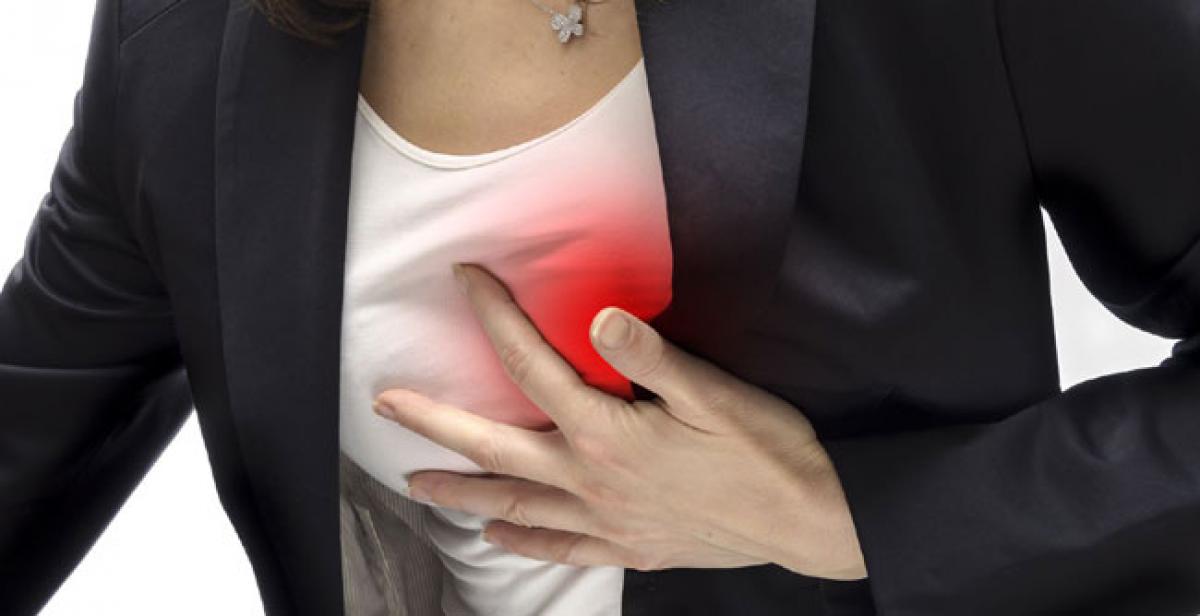Know your heart

Coronary artery disease CAD as the name suggests is involvement of the blood vessels that supply the heart muscle Plaque builds up in these arteries resulting in reduced flow or a complete obstruction The resultant decreased blood flow results in damage or death of a portion of the heart muscle, resulting in a heart attack
Coronary artery disease (CAD) as the name suggests is involvement of the blood vessels that supply the heart muscle. Plaque builds up in these arteries resulting in reduced flow or a complete obstruction. The resultant decreased blood flow results in damage or death of a portion of the heart muscle, resulting in a heart attack.
Statistically, heart attacks are more deadly and disabling for women as compared to men; fewer women than men survive their first heart attack. Among women, 38 percent die within one year of their first recognized heart attack, compared with 25 percent of men.
In India, cardiovascular disease is the number one killer of women. This is an alarming situation as there is a difference in the way heart attack appears in women and men, Moreover, women are at a higher risk of getting a heart risk post menopause.
According to American Heart Association (AHA), menopause does not cause cardiovascular disease. But certain risk factors increase around the time of menopause. These include unhealthy eating habits, smoking, inactivity that together contributes to the heart diseases. However, the same can be reversed by maintaining a healthy lifestyle and a proper diet.
Coronary artery disease is different in women. Possibly in women hormonal or genetic differences change the way their arteries react. In women a more diffuse even distribution of the plaque is seen along the walls of the coronary arteries, while in men there tend to be bulges of plaque.
Given that the current diagnostic tests look for clumps of blockage, they are less useful in women. Probably why, one-third of women who have heart attacks do not show clear blocks on these tests.
Women’s hearts are more susceptible to irregular beats. As a result, women are more likely to experience abnormal heart rhythms as a side effect of medication.
The ovarian hormones, cause women to have, on average, lower blood pressure than men until menopause and also play a protective role in lowering blood cholesterol in younger women. By age 60, after menopause, higher blood cholesterol makes women more susceptible to blocked coronary arteries, particularly in the presence of high triglycerides, another fatty substance that circulates in the blood. Hypertension increases the risk of heart attack, heart failure, and stroke. Women also respond differently from men to medication for hypertension.
Given that women tend to have heart attacks later in life than men do, they often have other diseases (such as arthritis or osteoporosis) that can mask heart attack symptoms. Thus, even the symptoms of heart attack can be different in women resulting in them often being misunderstood.
Women may have a lesser tendency to have the traditional symptoms of crushing chest pain, difficulty in breathing and left arm numbness.
Two-thirds of women have none of these signs. Heart attack symptoms in women are often subtle, frequently presenting as fatigue, sweating, nausea, or jaw pain. While the symptoms may not be distinctive, the consequences could be devastating.
The exercise stress test, or stress ECG, may be less accurate in women. Certain studies have shown Dobutamine Stress Echocardiography and exercise thallium myocardial scintigraphy as reliable methods of diagnosing coronary artery disease in women. Lifestyle changes and awareness may prevent 80% of heart disease. Be aware, be prepared. (The writer is a MD,Fortis Hospitals)
By Dr Vasundhra Atre













